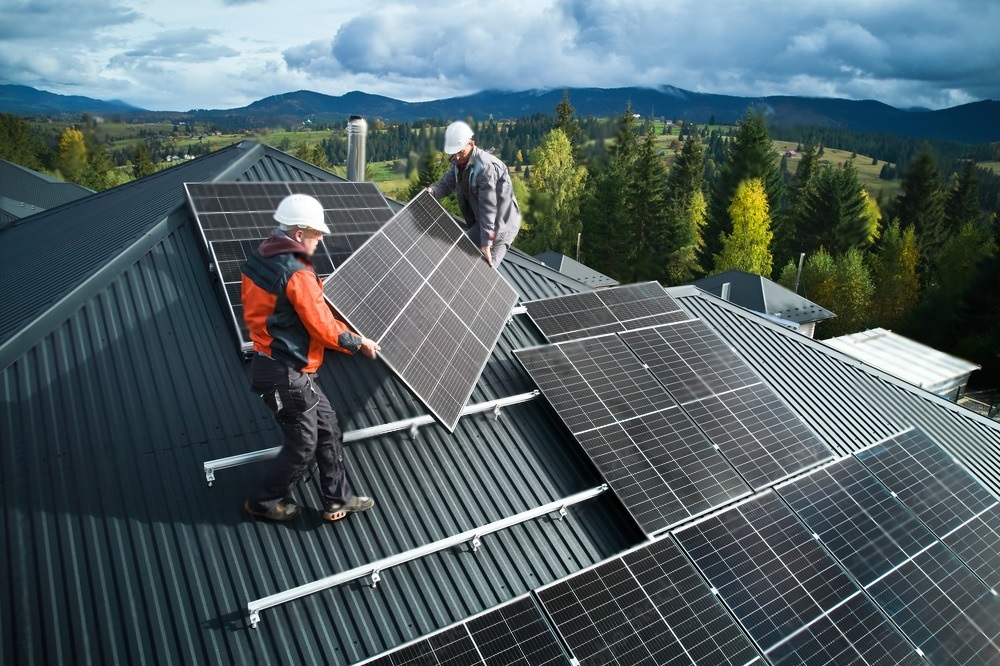
Financing Your Solar Installation: Options and Tips
Understanding the Financial Landscape of Solar Energy
Solar power has become increasingly popular as homeowners seek to reduce their carbon footprint and energy costs. However, the upfront expense of installing solar panels can be daunting. This comprehensive guide will explore various financing options and provide valuable tips to help you make an informed decision about powering your home with solar energy.
If you’re considering solar installation, you might have come across resources like https://nations1stsolar.com/2024/07/16/financing-your-solar-installation-options-and-tips/. While such websites offer helpful information, it’s crucial to understand all aspects of solar financing before making a decision. Let’s dive into the world of solar energy financing and discover how you can make this eco-friendly upgrade more affordable.
The True Cost of Going Solar
Before we delve into financing options, it’s essential to understand the costs associated with Solar Installation. The price tag for a residential solar system can vary widely depending on factors such as:
- Home size and energy consumption
- Roof condition and orientation
- Local climate and sunlight availability
- Equipment quality and type
- Installation complexity
On average, a typical residential solar system in the United States costs between $15,000 and $25,000 before incentives. While this might seem steep, remember that solar panels can significantly reduce or eliminate your electricity bills for decades to come.
Exploring Solar Financing Options
Now that we’ve covered the costs, let’s examine the various ways you can finance your solar dream:
Cash Purchase: The Straightforward Approach
Paying cash upfront for your solar system is the simplest option. It offers several advantages:
- Immediate ownership of the system
- No interest payments or ongoing financial obligations
- Maximum long-term savings on electricity costs
- Eligibility for all available tax credits and incentives
However, not everyone has the liquidity to make such a large purchase outright. If that’s your case, don’t worry – there are plenty of other options available.
Solar Loans: Borrowing to Build a Brighter Future
Solar loans have become increasingly popular as they allow homeowners to spread the cost of Solar Installation over time. These loans come in several forms:
- Home Equity Loans or Lines of Credit (HELOC): These use your home as collateral and often offer lower interest rates. However, they put your home at risk if you default on payments.
- Personal Loans: Unsecured loans based on your creditworthiness. They typically have higher interest rates but don’t require collateral.
- Solar-Specific Loans: Offered by some solar installers or specialized lenders, these loans are designed specifically for solar projects and may offer competitive terms.
When considering a solar loan, pay attention to:
- Interest rates
- Loan terms
- Down payment requirements
- Any fees or closing costs
Solar Leases and Power Purchase Agreements (PPAs): The “No Money Down” Options
If you’re looking to go solar with minimal upfront costs, solar leases and PPAs might be appealing:
Solar Leases: You essentially rent the solar system from a provider. You pay a fixed monthly amount, regardless of how much energy the system produces.
Power Purchase Agreements (PPAs): Similar to leases, but you pay for the electricity the system generates at a predetermined per-kWh rate, which is typically lower than utility rates?
Both options allow you to enjoy the benefits of solar power without the responsibilities of ownership. However, they also mean you won’t be eligible for tax incentives, and your long-term savings may be lower compared to owning the system outright.
Navigating the Solar Financing Maze: Tips for Success
With so many options available, choosing the right financing path can be overwhelming. Here are some tips to help you make the best decision:
Assess Your Financial Situation
Take a close look at your current financial health. Consider factors like:
- Your credit score
- Available savings
- Monthly budget
- Long-term financial goals
Understanding your financial position will help you determine which financing options are most suitable for your situation.
Research Incentives and Rebates
Solar incentives can significantly reduce the overall cost of your system. Look into:
- Federal Investment Tax Credit (ITC)
- State and local tax incentives
- Utility company rebates
- Solar Renewable Energy Credits (SRECs)
These incentives can make a substantial difference in the affordability of your solar project.
Compare Financing Options Side by Side
Don’t settle for the first offer you receive. Shop around and compare different financing options. Consider:
- Total cost over the life of the loan or lease
- Monthly payments
- Interest rates
- Term length
- Any fees or penalties
Create a spreadsheet to help you visualize and compare the long-term costs and benefits of each option.
Think Long-Term
While it’s natural to focus on immediate costs, remember that solar is a long-term investment. Consider:
- Projected energy savings over the system’s lifetime
- Potential increase in home value
- Environmental impact
- Energy independence
Sometimes, an option with higher upfront costs can lead to greater long-term benefits.
Read the Fine Print
Before signing any agreement, carefully review all terms and conditions. Pay special attention to:
- Warranty information
- Maintenance responsibilities
- Performance guarantees
- Cancellation policies
- Escalator clauses in leases or PPAs
Don’t hesitate to ask questions if anything is unclear.
Consult with Solar Professionals
Reputable solar installers can provide valuable insights into financing options. They often have partnerships with lenders and may offer competitive financing packages. However, don’t feel pressured to use their preferred financing option – it’s always wise to explore alternatives independently.
Illuminating Your Solar Future
Financing a solar installation doesn’t have to be a daunting task. By understanding your options and carefully considering your unique financial situation, you can find a solution that allows you to harness the power of the sun without breaking the bank.
Remember, solar energy is not just an expense – it’s an investment in your home, your financial future, and the planet. Whether you choose to pay cash, take out a loan, or opt for a lease or PPA, the important thing is that you’re taking steps towards a cleaner, more sustainable energy future.
Key takeaways:
As you embark on your solar journey, keep these key takeaways in mind:
- Understand the true costs of solar installation for your specific situation.
- Explore all available financing options, from cash purchases to loans and leases.
- Research and take advantage of solar incentives and rebates.
- Compare options carefully, considering both short-term affordability and long-term benefits.
- Read all agreements thoroughly and don’t hesitate to ask questions.
- Consult with solar professionals, but also do your own independent research.
By following these guidelines and taking the time to make an informed decision, you’ll be well on your way to powering your home with clean, renewable solar energy. The future is bright – and with the right financing approach, it can be solar-powered too!
What’s the best way to finance a solar installation?
The best financing option depends on your individual circumstances. Cash purchases offer the highest long-term savings, while solar loans provide a balance between ownership and affordability. Leases or PPAs are good for those seeking low upfront costs. Consider your financial situation, credit score, and long-term goals when choosing.
Are there any hidden costs in solar financing?
While not necessarily hidden, some costs to watch for include loan origination fees, closing costs on home equity loans, and escalator clauses in leases or PPAs. Always read contracts carefully and ask about maintenance costs, insurance requirements, and any potential penalties for early repayment or contract termination.
How do solar incentives affect financing?
Solar incentives can significantly reduce the overall cost of your system, making financing more affordable. The federal Investment Tax Credit, state rebates, and local incentives can lower your upfront costs or loan amount. Some financing options, like leases, may not allow you to directly benefit from these incentives, so consider this when choosing.

